Art
10 Korean Artists Who Are Shaping Contemporary Art

Park Chan-kyong, still from Citizen's Forest, 2016. Courtesy of Art Sonje Center and Kukje Gallery.
Across cultural disciplines in Korea, contested memories and trauma ruptures both past and present—from the division of the peninsula and Japan’s enslavement of Korean comfort women in the Pacific War, to the deadly 1980 Gwangju Uprising, to the 2014 Sewol Ferry disaster in which more than 300 passengers, mostly high school students, drowned after the ship capsized.
In 2016, it was revealed that 9,473 prominent artists, writers, filmmakers, and actors who were critical of then-president Park Geun-hye’s lackluster handling of the maritime tragedy had been blacklisted by the administration. The artists had been denied state grants and international opportunities, including participation in the Gwangju Biennale and cultural exchange programs. The exposing of Park’s clandestine blacklist, among the administration’s other corruptions, eventually led to her impeachment, but the repercussions of years of restrictions and censorship are still being felt today.
Internationally, the work of artists engaging with Korean history is routinely subcategorized or even oppressed. For example, at the recent Aichi Triennale in Nagoya, an exhibition containing sculptures of Korean comfort women was shut down, representing the ongoing sociopolitical tensions between Korea and Japan. In the United States and Europe, where media narratives around South Korea are dominated by K-pop and K-beauty, artists of the Korean diaspora might resist or surgically dissect such superficial definitions.
How can a Korean artist—however one identifies as such—shape their own narrative? I often think of a quote by author Min Jin Lee, which was repurposed by curator Hyunjin Kim for the Korea pavilion presentation at the 58th Venice Biennale: “History has failed us, but no matter.” As such, the practices of these artists often grapple with issues such as colonization, diaspora, collective amnesia, division lines, gender, and notions of an East Asian identity or transnationalism. While this list is by no means exhaustive, it loosely assembles a cohort of art practices that embrace—and prod at—a conflicted definition of “Korean art.”
B. 1965, Seoul. Lives and works in Seoul.
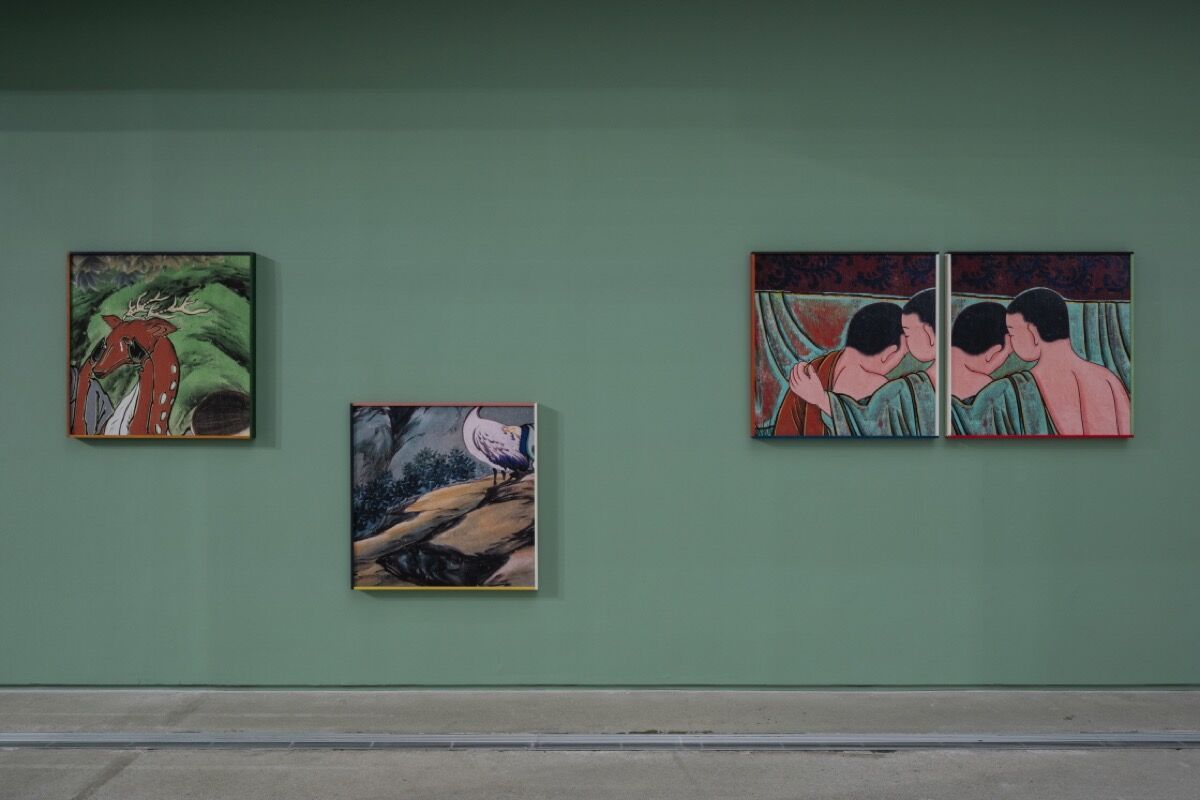
Park Chan-kyong, installation view of “Gathering” at the National Museum of Modern and Contemporary Art, Seoul, 2019. Photo by Hong Cheolki. Courtesy of the artist, MMCA, and Kukje Gallery.
It is said that a ghost only appears on Earth when there is an unresolved conflict. In Park Chan-kyong’s three-channel film Citizen’s Forest (2016), viewers slip in and out of a comatose state of collective amnesia as they see ghouls from Korea’s past: young students in uniform, resembling those who died in the Sewol Ferry tragedy; men bearing glossy, skull-like helmets, presumably victims of the Gwangju massacre.
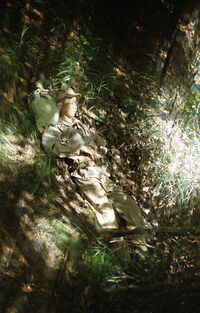
Park Chan-Kyong
View Slideshow
5 Images
The polyphonic practice of the artist, critic, curator, and film director is rooted in these discontinuous histories, which haunt the image of an economically prosperous, modernized Korea presented by international media. Using the screen as a generational surface for memory, he addresses the lack of reparations for such victims of history and proposes institutional critiques of social and political organizations. (His brother, Oldboy director Park Chan-wook, was one of the artists blacklisted by the Park Geun-hye administration.)
In his most recent large-scale solo exhibition at the National Museum of Modern and Contemporary Art in Seoul, Park reimagines the museum space as a sensitive promoter of regional histories in Small Museum of Art (2019), instead of the so-called “world views” presented by Western institutions.
B. 1971, Seoul. Lives and works in Berlin and Seoul.
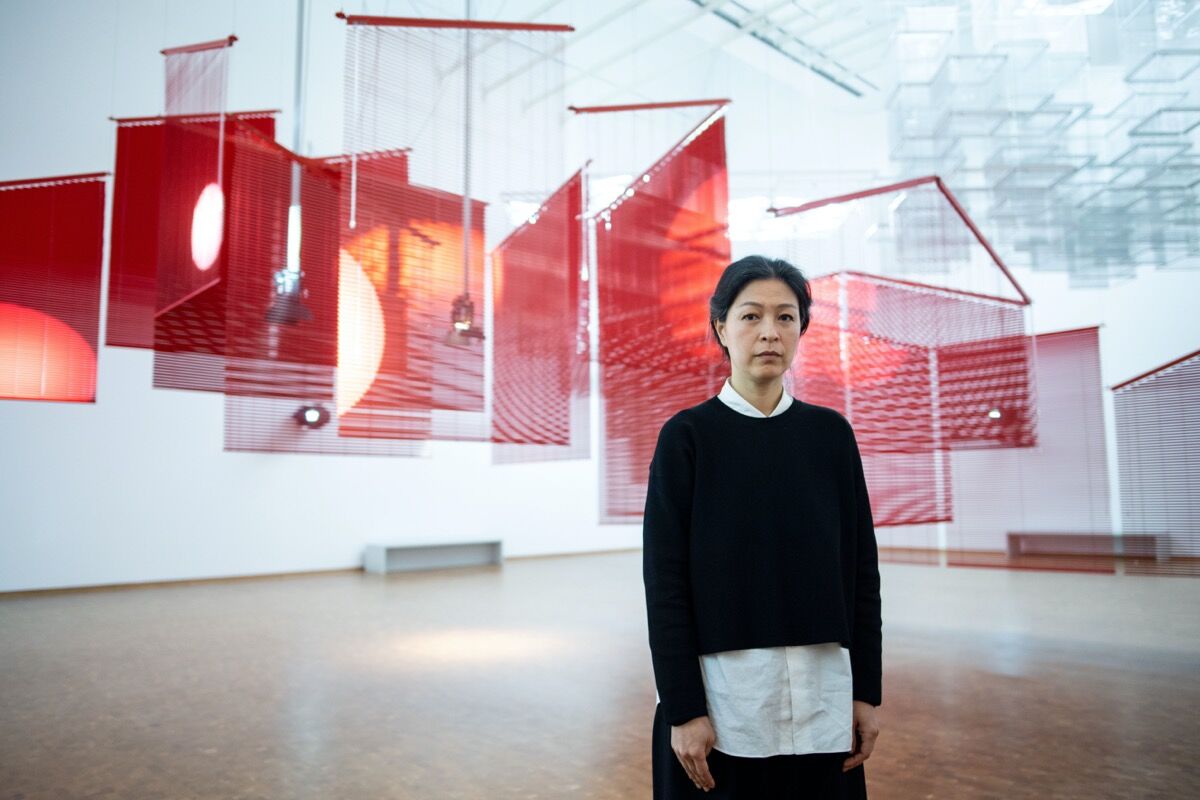
Portrait of Haegue Yang in front of her installation Mountains of Encounter, 2008, in “Haegue Yang: ETA 1994-2018” at Museum Ludwig, 2018. Photo by Marius Becker. Image via Getty Images.
Haegue Yang has utilized the humble Venetian blind in her practice since 2006. These banal window coverings, intended to block out light, are refashioned into kinetic, minimalist sculptures that she expands into maze-like horizontal or vertical formations—which visitors are encouraged to walk through or under—or enclosed cubic perimeters, a reference to
’s self-made systems.
Yang showed these blinds, along with other works, at the Korea pavilion at the 53rd Venice Biennale, and at recent major solo shows at Cologne’s Museum Ludwig (in conjunction with her winning the 2018 Wolfgang Hahn Prize), the South London Gallery, and the Institute of Modern Art in Brisbane.

Haegue Yang
View Slideshow
5 Images
There is an element of ludic interaction in her works, too, from the shamanistic series “The Intermediate” (2015–present), figures of artificial straw, and plants and fruits on wheels. Her 2019 commission for the Museum of Modern Art was made up of freestanding retro-futuristic shapes—Yang often references
choreographer
and
artist
—covered in bells that chimed and twinkled as performers moved them around an open atrium.
Suki Seokyeong Kang
B. 1977, Seoul. Lives and works in Seoul.
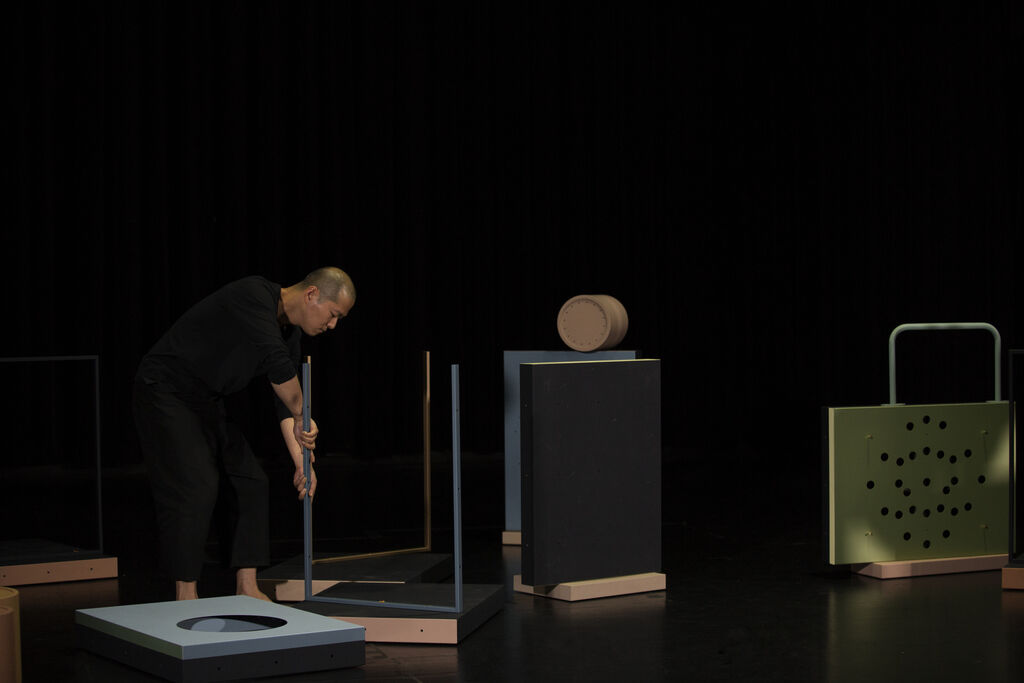
Suki Seokyeong Kang
Black Mat Oriole, 2017-2018
Embedded systems—musical, spatial, performative—exist within Suki Seokyeong Kang’s assemblies of sculptures, textiles, and performers. The ambitious video-installation-performance project Black Mat Oriole (2016–17), which made its U.S. debut at the Institute of Contemporary Art Philadelphia in 2018, takes as its starting point the codifications of jeongganbo, an ancient system used to notate Korean court music. Jeongganbo is made up of symbols within individual rectangular cells (instead of the Western latticework system of staffs and noteheads) to transcribe rhythm and pitch. These rectangular cells—and the temporal worlds evoked within them—are referenced in the similarly shaped traditional hwamunseok reed mats, which Kang sources from female Korean artisans, as well as the wooden frames, the small raised platforms, and even the enclosed grid of the video screen itself. Against these squares, performers dance, moving and expressing themselves within the limitations of these minimalist shapes.
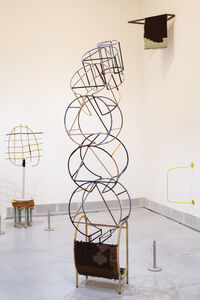
Suki Seokyeong Kang
View Slideshow
5 Images
Objects from Black Mat or similar works delineating the passages of space, time, and rhythm have appeared at the 58th Venice Biennale, the 2018 Shanghai Biennale, and the 2016 Gwangju Biennale.
siren eun young jung
B.1974, Incheon. Lives and works in Seoul.

siren eun young jung, A Performing by Flash, Afterimage, Velocity, and Noise, 2019. © siren eun young jung. Courtesy of the artist.
In the 1940s, you might have found yeoseong gukgeuk performers—all-female drag opera troupes—all around Korea. Confronting heteronormative traditions in theater, these performers would spend years embodying specific behaviors and speech patterns to encapsulate the fluidity of gender and androgyny. Unfortunately, this subculture was mostly erased from Korean modern history after the militant and conservative administration of Park Chung-hee shut down such troupes in the 1960s and ’70s. The artist siren eun young jung’s ambitious research project is an archival investigation into this scene.

siren eun young jung
View Slideshow
4 Images
For over 10 years, she has explored notions of gender performativity, tradition, and historical oppression via conversations with these performers, then creates works out of these interactions. For example, the video piece A Performing by Flash, Afterimage, Velocity, and Noise (2019), shown at the Korea pavilion at the 58th Venice Biennale, features a younger yeoseong gukgeuk performer, one of the few who has continued the practice; a lesbian actress; a well-known drag king; and a disabled dancer. In tracing the history of gender roles in theatrical settings, she interrogates boundaries of performance, the body, and normativity.
B. 1968, Daejeon. Lives and works in Seoul.
In a description for Minouk Lim’s video work The Possibility of the Half (2012), the artist writes that the “possibility of community does not come from the reigns of media and ideology but the power of tears and fears.” Deconstructing this idea, the work shows archival news footage of people crying over the 2011 death of North Korean state leader Kim Jong-il and the 1979 assassination of South Korean president Park Chung-hee, conflating the two events and demonstrating subtle nationalist efforts, masked as emotion, in media.
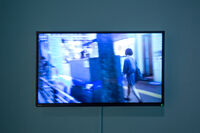
Minouk Lim
View Slideshow
3 Images
In her practice, she aims not to rewrite or challenge historical convention, but to reveal the mechanisms of change and mourning via mass media. Similar connections of personal experience against larger political or global narratives appear in Navigation ID (2014), comprised of shipping containers containing the remains of victims of the Korean War massacres, and the installation Si Tu Me Vois, Je Ne Te Vois Pas (2019), an artificial shallow river filled with phosphorescent liquid and littered with a traditional Korean dress, a floating orb, and other various symbolic items, gesturing at the passage of time and the notion of fluid boundaries.
B. 1972, Seoul. Lives and works in Bristol, England.

Young In Hong, still from The White Mask, 2019. Courtesy of the artist and MMCA, Seoul.
South Korean critic Hye Jin Mun, in writing about Young In Hong’s work, once asked: “How can we pay attention to those who are marginalized without categorizing them as a specific group or embrace the marginal without differentiating or objectifying them?”
These sensitive inquiries and questions drive much of the artist’s work, from her explorations of the relationships between humans and animals in the performance-installation The White Mask (2019), or in narratives of uncompensated female domestic and industrial labor in Un-Splitting (2019). The latter is a live event in which actors perform highly choreographed repetitive actions and gestures of social assimilation, such as forced smiling and needlework, incorporating these with the movements of different bird species as a reference to the various oppressions in human civilization, whether environmental or gender-based.
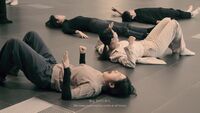
Young In Hong
View Slideshow
3 Images
Her work focuses not on the group but the individual within larger sociopolitical scenes. For example, her earlier embroidery paintings, all hand-sewn, present singular voices in rich detailed tapestry, as in Burning Love (2014), which shows a 2008 candlelight vigil to oppose the Korean government’s decision to allow the import of possibly diseased U.S. beef.
B. 1993, Seoul. Lives and works in New York.
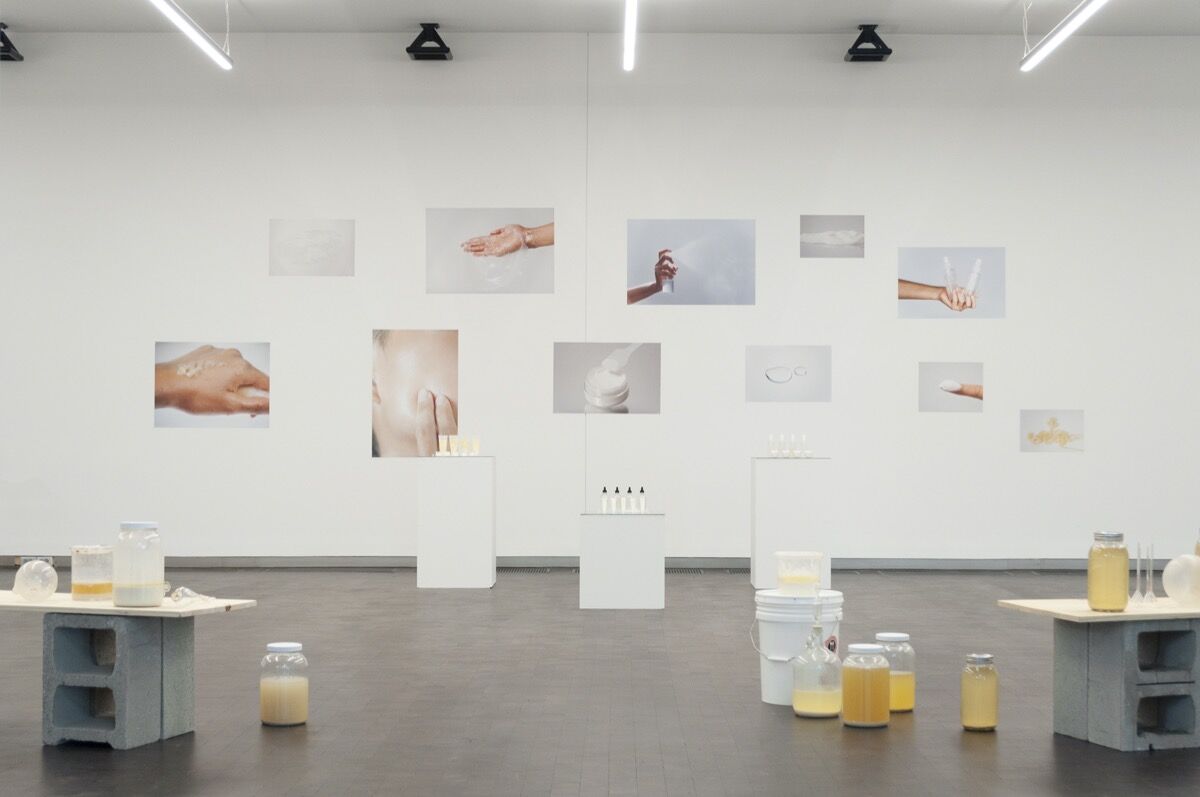
Tiffany Jaeyeon Shin, installation view of “Universal Skin Salvation 2.0: Strange Life: Beauty, Race & War” at Lewis Center for the Arts, Princeton University, 2018. Courtesy of the artist.
In her research for Microbial Speculation of Our Gut Feeling (2020), Tiffany Jaeyeon Shin discovered an interesting factoid—that immigrants may be more prone to metabolic diseases because of what happens inside of their gut upon living on foreign soil: The complex microbes developed within their home country are quickly replaced by those that are more commonly found in the bodies of their new neighbors.
In her practice, Shin considers these biopolitical and colonial interventions. Microbial Speculation includes the artist’s home-brewed lactic acid, the bacteria of which can fortify the gastrointestinal lining, literally creating a resistant barrier. She produced the concoction using an open-source method developed by an organic farming group in Korea.

Tiffany Jaeyeon Shin
View Slideshow
5 Images
At a recent exhibition in New York, guests were invited to imbibe samples of this acid for free, an act of anti-capitalist care, which she considers a significant facet of her practice. Her other products include makgeolli, an unfiltered Korean rice wine; K-beauty skincare products, which interrogate Western fetishization of Korean beauty; and hand-grown greens, which were foraged and consumed for a collaborative dinner organized with New York’s Spiral Theory Test Kitchen.
Soyoung Chung
B. 1979, Paris. Lives and works in Paris and Seoul.
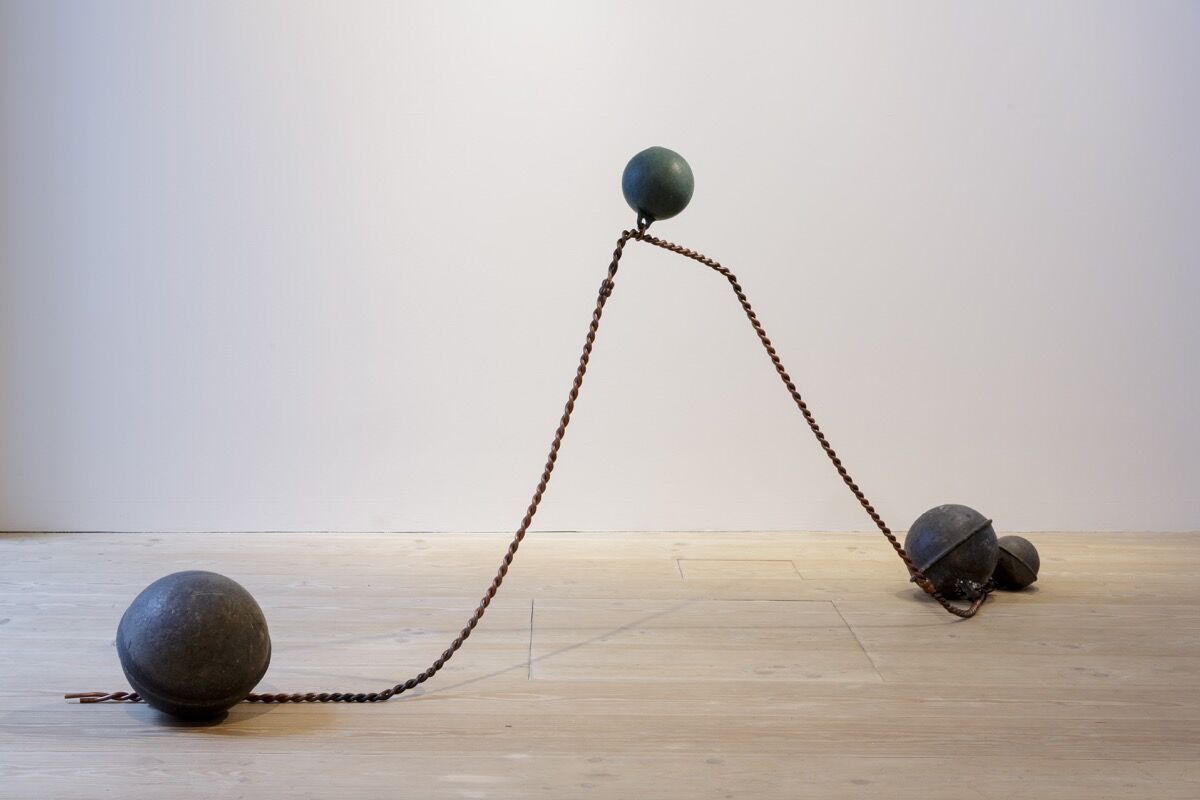
Soyoung Chung, Island for Fishermen, 2018. Photo by Tim Bowditch. Courtesy of the artist.
In the 1970s, the South Korean government built a small, rural village near the Demilitarized Zone, a strip of no-man’s-land that borders the North and South regions of the peninsula. Originally intended to entice South Koreans to migrate to the area—a plan that failed—the village has since been the site of various artistic explorations. It was here that Soyoung Chung engaged in a four-month-long residency for the Real DMZ Project, negotiating the political conflicts inherent in the physical materiality of land and space in works such as Ori Mountain (2016), a melting beeswax installation which mimics the geological ranges in the area.
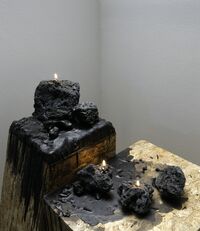
Soyoung Chung
View Slideshow
1 Image
Much of her work springs from similar geopolitical tensions. For a 2019 group show at London’s Delfina Foundation, she exhibited a sculptural installation created out of a 2018 residency at Gapado Island, Island for Fishermen, which utilizes found buoys possibly used to mark oceanic territory claimed by both Korea and China.
B. 1989,Seoul.Lives and works in Seoul.
A live-streaming session of a video game play; a cautionary tale of a leaked sex tape; an online suicide club: These are the three intertwining stories in Kim Heecheon’s Sleigh Ride Chill (2016) that form a picture of contemporary Seoul. Juxtaposing filmed and found footage with animated sequences, he uses technology—video gaming, face swapping, virtual reality—to examine social issues in Korea.
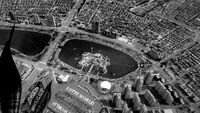
Kim Heecheon
View Slideshow
4 Images
To Kim, themes of loneliness, connectivity, and surveillance are intrinsically connected to the online world—temporal channels which he describes as revealing the “cracks” or “gaps” in our reality. For example, in Every Smooth Thing Through Mesher (2018), shown at the Gwangju Biennale in 2018 and produced by the Hans Nefkens Foundation, he pinpoints the phenomenon of a perceiving the world through our smartphones, presenting the screen as a literal processor that confuses timelines of past, present, and future.
B. 1982, Seoul. Lives and works in Paris and Seoul.
Anthropomorphized animals feature often in Ji Hye Yeom’s work. A dolphin narrates a strange folkloric tale in A Night with a Pink Dolphin (2015), shown at the artist’s solo show at Art Sonje Center in 2015; in AI Octopus (2020), an artificial-intelligence octopus ruminates on its place within our human realm, gliding through the streets of European city. Engaging in our abject fear of the advancement of a hyper-sentient species other than ourselves—AI Octopus includes discomforting close-up scenes of writhing octopi parts—she conveys radical evolutionary messages that touch on our planet’s environmental devastation.

Ji Hye Yeom
View Slideshow
1 Image
In Le Soleil Noir (2019), an animated Casper the Ghost plays fetch with adorable animated seals against background footage of a major scientific research site in Antarctica, where real seals are subject to constant scrutiny and intervention. All the while, a somber voiceover asks: “Can I truly be a friend with you?”
Ysabelle Cheung

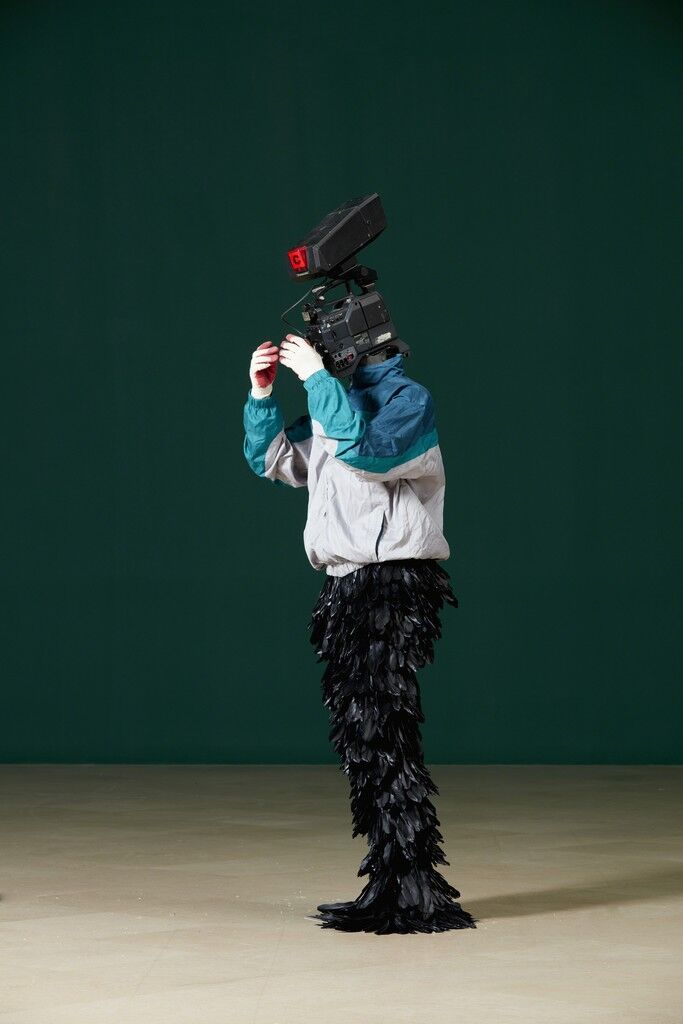
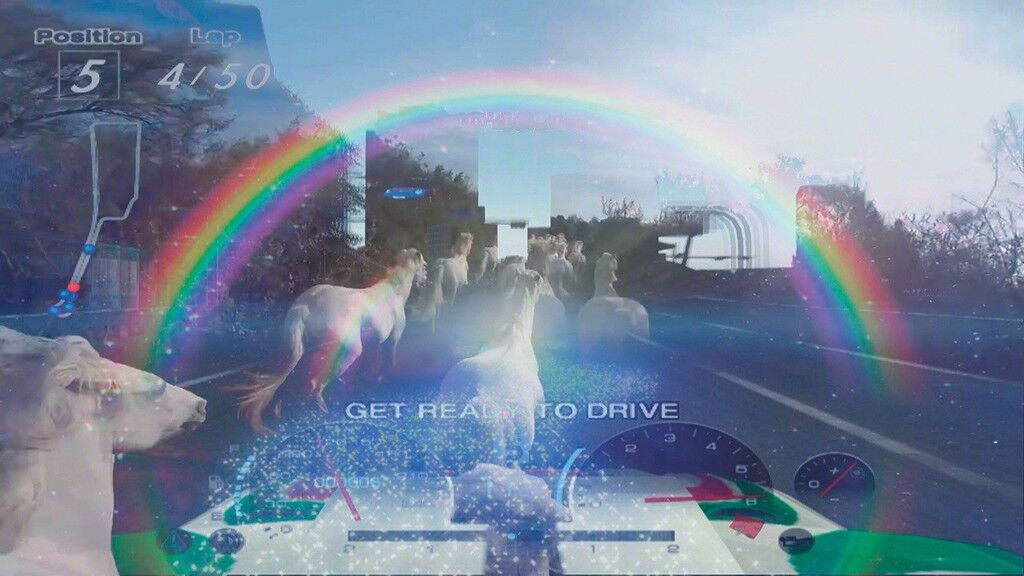


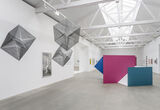


No comments:
Post a Comment